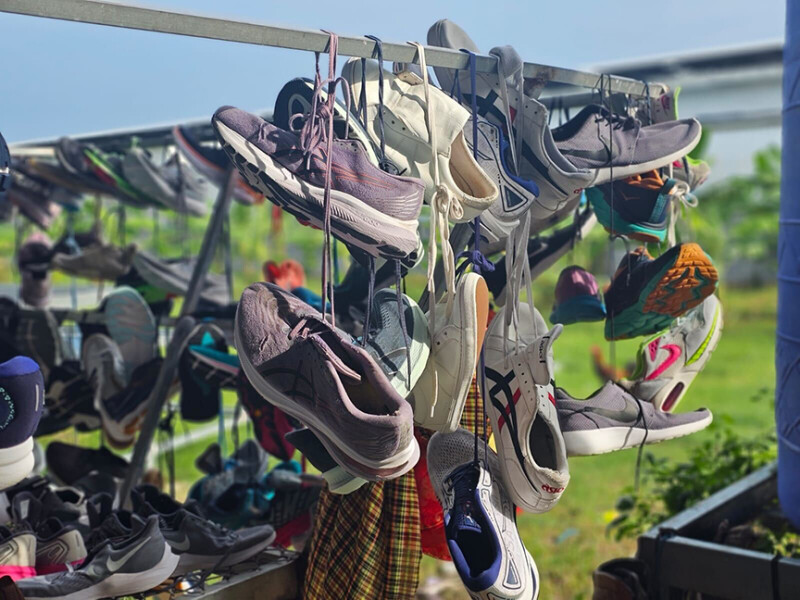With pickleball once again being featured at The Running Event in Austin, TX, next month, run specialty retailers need to dive a little deeper into the kitchen (that’s a pickleball term) and learn a little bit more about the fastest-growing sport in America. I am here to help.
I recently bought a new pickleball paddle – a Six Zero Double Black Diamond. I spent more time online researching its attributes than I did for a recent purchase of a new car. I watched videos, read reviews, took a deep dive into spin rates and the benefits of carbon fiber. I found spreadsheets that compared a slew of similarly priced paddles.
Friends and family rightfully scolded me for spending too much time on the computer deciding on a $180 purchase of a piece of recreational equipment. But where else could I unearth this information?
Pickleball was invented in 1965, but it wasn’t until the 1990s that it was played in all 50 states. Even then, it took the COVID-19 pandemic to give it a massive upward trajectory. In the last three years, pickleball has reportedly grown a ridiculous 158 percent and an estimated 36.5 million Americans now play the sport.
Pickleball has come of age at a time of upheaval in specialty retail. As the age of pickleball players continues to drop (one study has the average age at 35), the consumer habits of generations trained to shop virtually are likely to keep much of pickleball’s money online.
But for savvy run retailers ready to take a few small risks there is plenty of opportunity to add pickleball inventory to their offerings and cash in on the pickleball craze. Yes, you’ll be competing against online sales and big-box retailers, but that’s nothing new. Here are five pieces of advice from an obsessed pickleball fanatic that could help specialty retailers in the run space serve up additional profits by wooing pickleball customers.
1. Follow Your Feet
If to err is human, then I certainly proved my humanity with a pickleball-related purchase recently: I bought a pair of shoes without trying them on.
My first pair of shoes dedicated specifically to pickleball was a pair of Fila Volley Zones. I bought them on sale at a big-box sporting goods retailer. After a few months of playing indoors. I needed new shoes. Having been bitten hard by the pickleball bug, I felt justified in upgrading my shoes and purchased a pair from a well-known brand online. But they didn’t fit very well.
Running stores speak footwear better than all other retailers. If you’re going to sell pickleball gear, start with footwear. It’s what you know. It’s what you do well. It’s also the one piece of pickleball gear that you need to try on before using. Something I know all too well.
If you already carry footwear brands that make court shoes, that’s a great place to start. Also, consider bringing in other brands that offer pickleball/tennis shoes with options like wide-toe boxes and additional arch support.
And don’t forget that pickleball players, just like runners, benefit from footbeds and quality socks. If you’re selling a $150 pair of pickleball shoes, make sure the pickleball player knows they should add a pair of high-performance socks to the mix.
2. Outfox the Big Boxes
A typical national sporting goods chain store will offer six-to-eight different brands of pickleball paddles — brands like Onix, Head, Joola and Selkirk tend to dominate. While those brands all make decent paddles the vast majority of recreational players find suitable, they are far from the only options.
USA Pickleball, the governing body of the sport in the US, has an Equipment Evaluation Committee. Manufacturers from around the globe submit paddles and balls to the EEC for testing, inspection and certification. Currently, more than 700 companies produce nearly 3000 different models of pickleball paddles with EEC certification.
With some 700 pickleball brands on the market, smaller retailers have plenty of options from which to choose when considering what to sell. If you’re considering adding pickleball paddles to your store, pick brands and models the big-box stores don’t offer. And go light on the beginner paddles — let the box stores sell the $50 paddles. You’ll want to offer models for intermediate and advanced players — more expensive paddles with better margins.
3. Have Some Balls
Let’s go back to that USA Pickleball website: Not only does it list approved paddles, but it also has a list of approved balls. Once again, the opportunity exists for smaller shops to carry a selection of brands besides the ubiquitous Franklin and Onix. There are plenty of other brands not being sold at big-box retailers just itching to get a few doors at retail shops.
There is a difference between indoor and outdoor balls, so make sure you have choices of both types. Also, indoor lighting can vary wildly by location — the standard yellow ball is difficult to see at the court where I play in the winter months. So carry brands that offer a couple of color options on indoor balls.
4. Know a Little Tech
As a skier and fly-fisherman, I’ve seen how significant technological advances in design and materials can rapidly change equipment and enhance the enjoyment of the sport. In the early 1990s, shaped alpine skis made turning easier. In the early 1970s, graphite fly rods came to the fishing market, improving casting almost overnight. Golf, too, has seen huge performance gains brought about by improvements in the materials used in clubs.
Pickleball is currently in the midst of a gear revolution. Kevlar and carbon fiber technology is the latest rage with new paddles and companies now produce style-specific models that can put a priority on power or control.
But skiing, fly-fishing and golf are well supported by specialty retail shops — stores usually staffed by people who ski, fish and golf when not staffing the counter. One of the big advantages of specialty retailers is having staff comprised of enthusiasts who are early adopters of the latest and greatest gear. They can walk the walk.
For retailers selling pickleball paddles the challenge then is two-fold. Finding staff who play the game and understand the new technology.
Your staff doesn’t have to know the ins and outs of every paddle on the market, but having a couple of people on the floor who can speak intelligentially about things like materials, swingweight, twistweight, spin rating and balance points will be a huge advantage when selling to intermediate and advanced players.
5. Go Guerilla
Let’s say you’re in on pickleball. You’re selling pickleball-specific shoes for customers to try on. You’ve got cutting-edge paddles and balls the box stores don’t offer. You’ve got a staff that can engage on techs and specs.
Now, you’ve got to get the word out.
Pickleball’s recent success can make marketing pickleball tricky. Your messaging has to cut across a wide demographic swath and recognize some people play for the social aspect, others just for fun and some for the more serious competitive elements.
To reach them, go to where they are. Sure, social media is part of the mix (Instagram and Facebook especially), but old-school tactics will work, too.
I played in a small co-ed pickleball tournament earlier this year where the door prizes were gift cards to a local specialty sporting goods shop. That’s a great idea.
So, too, is partnering with local recreation departments that organize tournaments, leagues and introductory classes.
Consider borrowing an idea from ski and golf shops. Secure a court for a couple of hours some weekend morning and offer a demo day, where pickleball players can try out your paddles and balls, talk to your staff and learn more about the depth and breadth of your gear selection.
With its rise in popularity and a dizzying amount of gear on the market, there certainly is room for specialty retailers to take a share of pickleball sales away from the internet.
About the author
Matt Crawford is a freelance writer and communications specialist who lives in northern Vermont. He plays pickleball throughout the year. His stories have appeared in Outdoor Retailer, Inside Outdoors, Outdoor Life and, now, Running Insight. [email protected]






